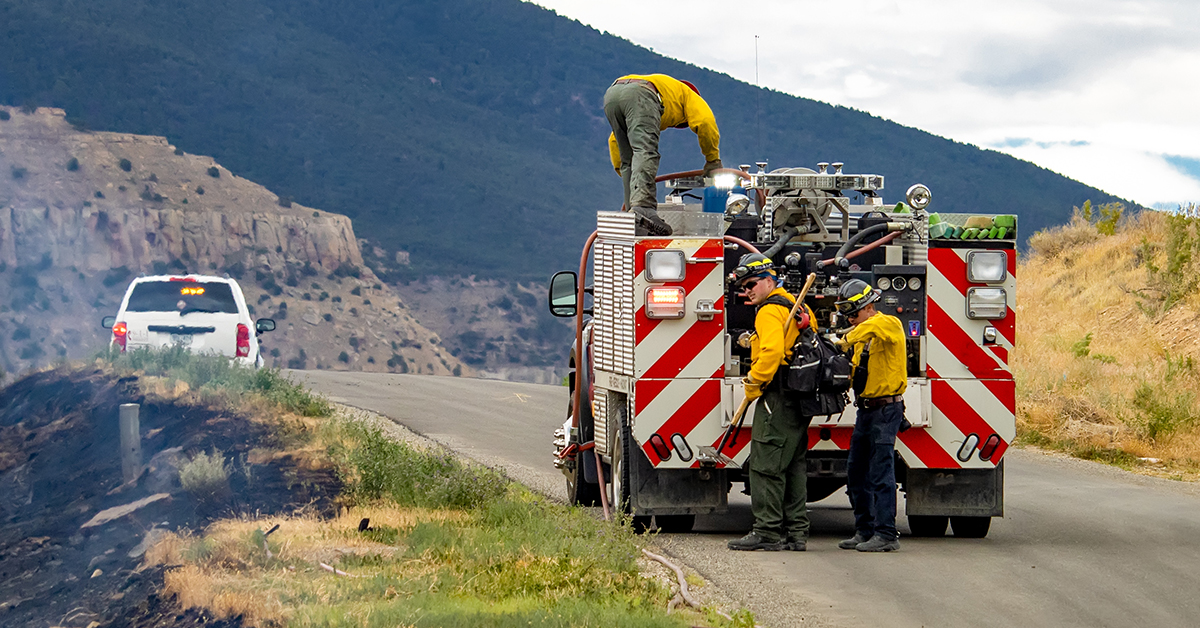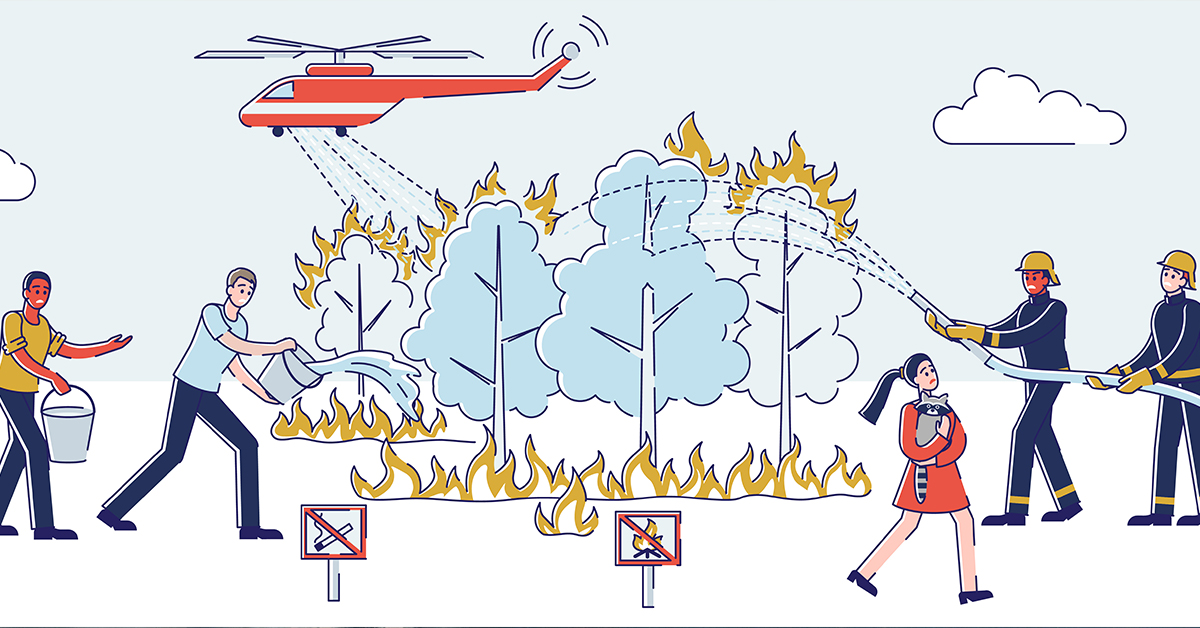Navigating Wildfire Challenges: Lessons From Experiences

Wildfires have become a growing concern worldwide. With each passing year, we are increasingly confronted with the challenges posed by these destructive forces and strive to minimize the risk of potentially devastating wildfires.
Canadian Experience
In 2023, Canada faced its worst wildfire season in recorded history. Throughout the Spring to Fall fire season, a staggering 18.5 million hectares were engulfed in flames, with many fires persisting as holdover fires into the winter months. British Columbia alone recorded 92 holdover fires, Alberta reported 54, and Quebec, the hardest-hit area, faced numerous holdover fires, some reigniting as late as April 10, 2024.
The impact extended beyond Canada, with smoke causing major air quality issues throughout the US, particularly affecting the east coast, including major cities like New York City and Chicago, as well as areas along the West Coast.
To provide perspective on the scale of the devastation, the total area burnt in the 2023 wildfires amounted to 18.3 million hectares, equivalent to 185,000 square kilometers or nearly 35 million football fields. This led to significant destruction, mass evacuations, and substantial losses throughout the fire season.
Looking ahead to 2024, the situation does not appear much better. As of April 1, 2024, British Columbia's accumulated snowpack stands at only 63% of normal, compared to 88% in April 2023, indicating heightened wildfire risks for the upcoming season.
Numerous evacuations occurred in 2023 due to the ongoing fire threat, notably in the Northwest Territories, where two-thirds of the territory was evacuated due to uncontrolled wildfires. Similar evacuations took place across Western, Central, and Eastern Canada.
Reflecting on recent history, the 2016 Fort McMurray wildfire in Alberta stands out as one of the most catastrophic wildfires in Canadian history. This wildfire destroyed over 2,400 buildings, forced the evacuation of over 88,000 people, and scorched approximately 590,000 hectares, resulting in an estimated $9.9 billion in damages, making it the costliest disaster in Canadian history.
US Experience
In the United States, the situation mirrors Canada's challenges. As of March 11, 2024, Texas faced its largest wildfire on record, "The Smokehouse Creek Fire," which consumed over 1 million acres of land.
Since 1871, the US has witnessed 19 wildfires burning more than half a million acres each, with the majority occurring in the last two decades. Notable among these is the 1871 Peshtigo fire in Wisconsin, which claimed 1.2 million acres of land and resulted in 1,152 deaths, overshadowed by the concurrent Great Chicago Fire.
More recently, the 2018 Camp Fire in Northern California stands as one of the deadliest wildfires in US history, burning over 150,000 acres, destroying 18,000 buildings (including more than 14,000 homes), and claiming 85 lives.

Preparing for the Future
In response to these escalating wildfire threats, government agencies at all levels in both Canada and the United States have intensified efforts to develop comprehensive wildfire prevention and mitigation plans.
Considerable resources have been allocated towards enhancing response capabilities, including protective equipment, firefighting personnel, aircraft, and wildfire management teams.
British Columbia's BC Wildfire Service, mirroring counterparts across Canada and the US, has implemented robust response plans prioritizing public safety, property protection, and critical infrastructure preservation.
Moreover, a surge in emergency support and educational programs aims to empower local communities and property owners with knowledge and resources to safeguard against wildfires. Recommended practices include clearing combustible materials around structures, creating fire-safe zones, and deploying urban firefighting equipment equipped with sprinkler systems.
Some Major Resources for Wildfire Planning and Mitigation include:
- FireSmartBC: This website offers valuable information and resources for wildfire preparedness and mitigation specifically tailored to British Columbia.
- Get Prepared - Wildfires: Provided by the Government of Canada, this resource offers comprehensive guidance on wildfire preparedness and response for Canadians.
- USDA Forest Service - Fire Management: The USDA Forest Service provides extensive information and tools for managing wildfires and promoting fire resilience in forested areas.
Given the ongoing drought conditions in British Columbia and Western Canada, the outlook for the 2024 fire season is concerning. There is an anticipated increased demand for firefighting capacity unless significant changes occur in the near future.

Mitigation & Prevention:
The adage "An Ounce of Prevention is Equal to a Pound of Cure" aptly summarizes the importance of proactive measures in addressing the threat of wildfires. Benjamin Franklin's wisdom, dating back to 1736, underscores the value of preventing fires rather than merely reacting to them.
In British Columbia, the Community Wildfire Risk Reduction (CLWRR) program, administered through the Ministry of Forests in collaboration with various agencies, plays a crucial role in wildfire prevention. Key highlights of the program include:
- Fuel management planning and treatments, with a focus on provincial Crown land around high-risk communities.
- Cultural and prescribed fire initiatives, including the development of a comprehensive prescribed fire program.
- Wildfire risk reduction activities targeting critical infrastructure, such as government-owned radio repeaters, weather stations, and airtanker bases.
Additional resources for local municipalities include:
Crown Land Wildfire Risk Reduction Planning Guide: This guide emphasizes the importance of developing inspection and mitigation programs within communities to reduce fuel loading and enhance wildfire resilience.
Implementing ongoing prevention measures, including inspections and activities to identify and address areas of potential fuel loading, is essential. A comprehensive plan involving all stakeholders—municipal governments, emergency responders, public works, businesses, and homeowners—is necessary to mitigate the spread of wildfires within communities.
It is never too late to initiate or enhance wildfire prevention and mitigation efforts. Numerous examples and resources, at the provincial, state, and federal levels, are available to support community-based initiatives.
It’s better to plan, inspect and prevent rather than to react after the fact.


